Cold Water Paddling is not always easy but having the right safety tips will put you on a safeter side, I’m going to kick things off by talking about the incredible adventure that is cold water paddling. Paddlers often seek out these chilly waters for the unique thrill and connection with nature they offer.
The Appeal of Cold Water Paddling
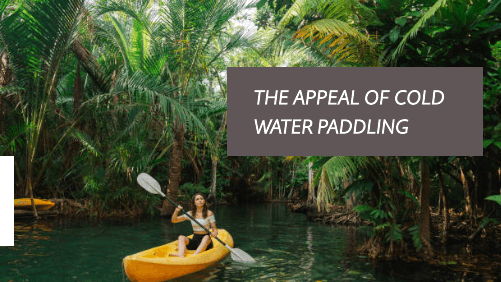
The experience presents an opportunity to explore serene waterways, see wildlife in their natural habitat, and enjoy the peaceful solitude away from bustling urban life.
The History of Sea Kayaking

But this isn’t just about the excitement. Sea kayaking has a storied past, tracing its roots back over 4,000 years near the Arctic Circle.
Inuits crafted these vessels as a means of survival and transportation in some of the most unforgiving waters on the planet.
Today, while our motives may be different, the level of respect and preparation required for these environments remains the same.
The Factors to Consider Before Venturing Into Cold Waters
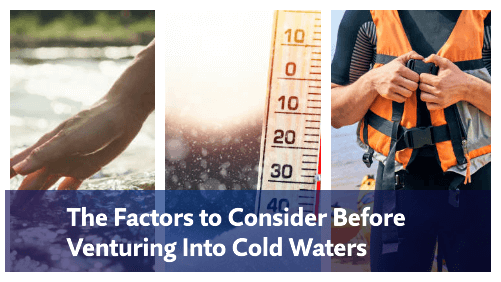
If you want to venture into cold waters, there’s a lot to consider.
- Water temperature (just the tip of the iceberg),
- weather conditions,
- exposure duration,
- and Safety measures.
They all play crucial roles in your experience.
It’s also critical to evaluate personal factors such as:
- Your activity level
- Recent food intake
- Hydration status
All of which can influence your body’s response to the cold. Moreover, it’s imperative to assess your skill level to ensure you’re equipped to handle potential challenges that could arise.
The Practical Advice to Enter These Waters Safely and With Confidence
Don’t worry too much about feeling unprepared. I’m here to help you with practical advice on entering these waters safely and with confidence.
It’s important to approach cold water paddling with as much knowledge and preparation as possible, as the risks involved are serious and can escalate quickly if not managed correctly.
The Risk of Hypothermia
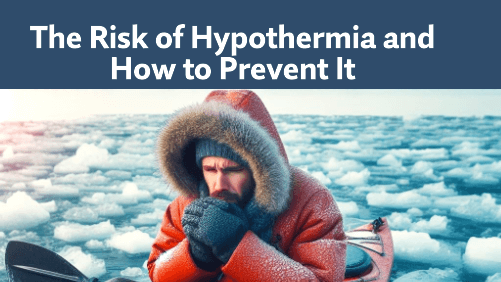
So, what’s one of the most significant risks you ask? Hypothermia. And that’s going include understanding exactly what it is, how it happens, and why even strong paddlers need to be vigilant about it.
Now what is hypothermia? Keep reading, and you’re going to find out about its dangers, and how sudden immersion in cold water can be much more than an uncomfortable dip – it can be a life-threatening emergency.
What is Hypothermia?
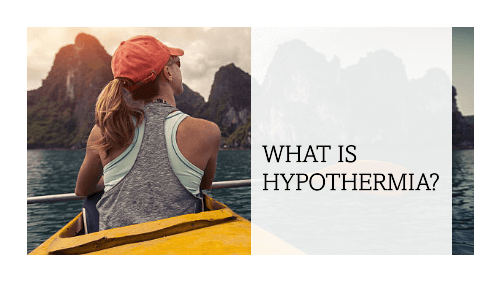
Hypothermia is the uninvited companion of cold water paddlers. It creeps in when the body loses heat faster than it can produce it, resulting from prolonged exposure to cold, wet, and windy conditions.
This isn’t just about feeling a bit chilly; it’s a serious condition that can impair your judgment and motor skills, potentially leading to fatal outcomes.
How Does It Happen?
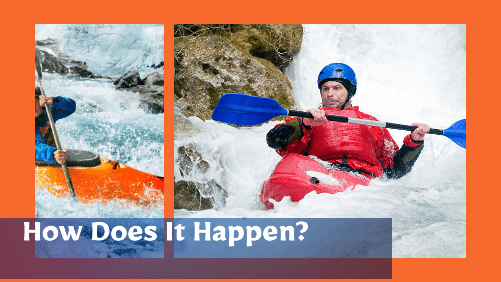
Hypothermia can strike in two ways.
- You might experience it suddenly with a fall into frigid waters, triggering a cold shock response that can be immediately life-threatening.
- Alternatively, it can develop gradually. This often happens as paddlers underestimate the cold or overestimate their endurance or their clothing’s effectiveness in such an environment. In either case, you need to be vigilant and prepared.
What is Cold Shock and Why is It Dangerous?
The concept of cold shock is critical to understand. Imagine tipping over your kayak and suddenly finding yourself in near-freezing water. Your body’s natural reaction is to gasp, which can lead to water inhalation and potential drowning.
The shock can also place immense stress on your heart, sometimes causing cardiac arrest, especially if you have a pre-existing heart condition.
How Does Hypothermia Affect Your Body and Mind?

I’m going to talk about hypothermia in terms beyond just numbers. Sure, the body’s core temperature is normally around 98.6 degrees Fahrenheit, and hypothermia sets in below 94 degrees Fahrenheit.
But what that feels like is something else entirely. You start shivering uncontrollably, your speech may slur, and confusion sets in. If the temperatures continue to drop, it can lead to unconsciousness and, in severe cases, death.
How Can You Prevent & Treat Hypothermia and Cold Shock?
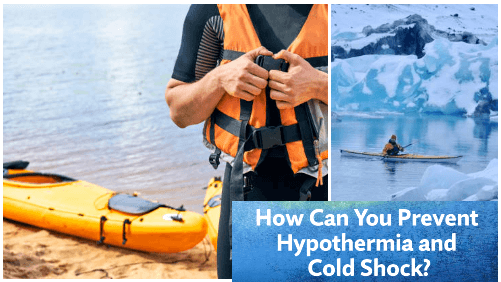
So, in essence, confronting hypothermia and cold shock requires a blend of respect for nature’s power, knowledge of the risks involved, and the right preparation.
It’s not enough to be a strong swimmer or an experienced paddler. Hypothermia cares little for your experience — it’s an unbiased threat present in all cold water environments.
Now, let’s delve into how we can manage and prevent hypothermia effectively:
1. Prevention & Treatment:
- Exercise common sense in assessing risks.
- Stay hydrated and nourished.
- Monitor each other for signs of hypothermia.
- Provide assistance and group warmth (huddling).
- Remove individuals from cold, wet, and windy environments.
- Change into dry clothing.
- Apply hypothermia wrap and vapor barrier.
- Evaluate the circumstances surrounding the cold challenge, including duration and severity.
2. Minimize or Reverse the Cold Challenge:
- Seek shelter from wind and wet conditions.
- Take measures to reduce exposure to cold elements.
3. Increase Heat Production:
- Engage in physical activity to generate body heat.
- Consume food and water to fuel metabolic processes.
4. Increase Heat Retention:
- Utilize dry insulation to conserve body heat.
- Avoid conditions that exacerbate heat loss.
5. Dress for Water Temperature:
- The first rule is to dress based on the water temperature, not the air temperature.
- Consider the three primary exposures: cold temperature, windy conditions, and wet insulation.
- Don’t forget about the risks of overheating and sun exposure.
Insulation Materials:
- Synthetic Clothing: Dries quickly and remains relatively warm even when wet.
- Avoid cotton: Cotton retains moisture and loses insulation value when wet.
Layering System:
- Base Layer (Wicking Fabrics): Keeps the skin dry by wicking away moisture.
- Insulating Layer (Polypropylene or Polar Fleece): Provides warmth.
- Windproof Layer: Traps warmth and protects against wind.
- Waterproof Layer: Shields insulation from getting wet.
Wetsuits:
- Neoprene Rubber Suits: Trap and insulate a layer of water next to the skin.
- Good for water activities and swimming.
- Can be cold when wet in windy conditions.
- Different neoprene thicknesses for varying warmth levels.
Drysuits:
- Moisture Barrier Layer: Keeps insulation dry and blocks wind.
- Allows adjusting insulation layers underneath for temperature control.
- Suitable for floating but not swimming.
- Comfortable during long paddles.
- Be cautious of overheating.
Protect Extremities:
- Head: Wool or neoprene headgear to protect thinking and throat.
- Hands: Consider pogies (paddle mitts) or functional gloves.
- Feet: Wet or dry boots.
- Eye Protection: Don’t forget eye protection.
- Head Protection: Invest in a good-quality helmet.
Emergency/Spare Clothes:
- Essential for changing in cold conditions.
- Protect against temperature, moisture, and wind exposure.
Remember, proper gear can make all the difference in staying safe and comfortable while paddling in cold climates.
Navigating Through Icy Waters: Conclusion & Community Call to Action
I’m wrapping up here, but this isn’t just about the tips and knowledge I’ve shared. It’s also about building a community that values safety and preparedness in cold water paddling.
